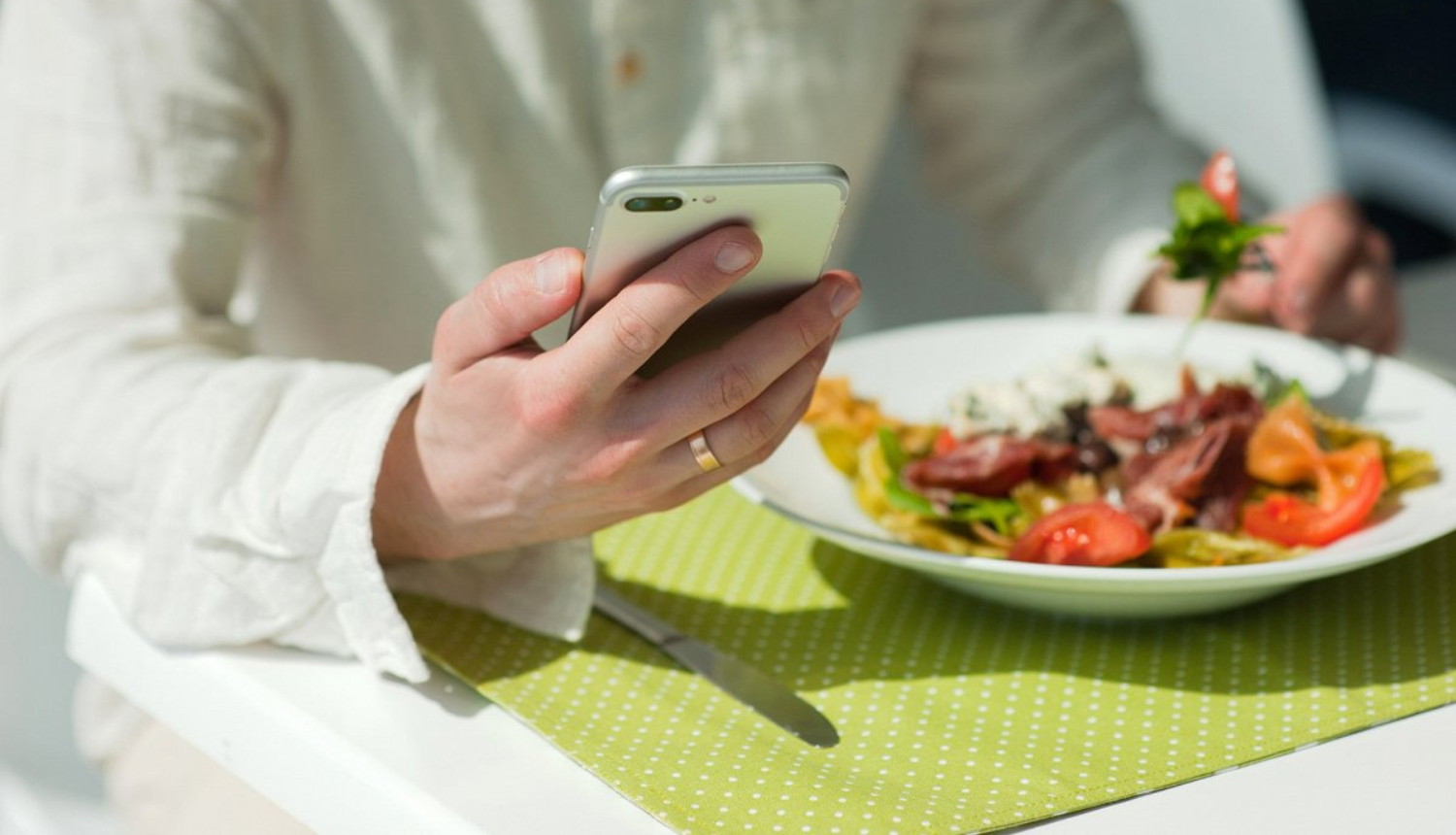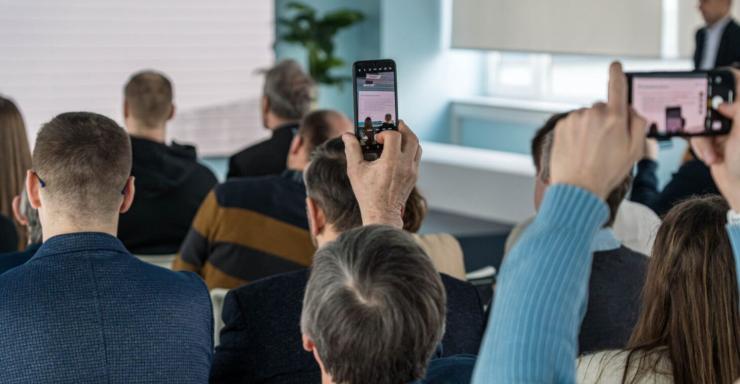The use of social networks has become an integral part of everyday life. We often see ideas for food recipes, information about healthy and unhealthy products, as well as various recommendations on how to reduce body weight or improve our daily habits. But do we eat more when we look at pictures of food on social networks? I am looking for answers to these questions both in foreign studies and in my master's thesis "The relationship between social network use and eating behavior".

The study was conducted in 2024 with 333 participants from Latvia of various ages, starting from 18 years old (93% of them – women), who filled out a survey on the "Facebook" or "Instagram" platform with approximately 30 questions about the use of social networks and their relationship with dietary habits.
The study concluded that we use social networks to search for new recipe ideas, as well as try products that we see on social networks in our menu, including changing our views on products. It seems significant that the images of food and dishes seen on social networks can affect appetite; that is, we can continue to snack even though we are full. Or your appetite can increase by viewing social network content for a long time.
Choosing dinner based on social media pictures
Food and meal-related content on social media is very diverse and is becoming increasingly popular. Here are some global statistics: In 2022, almost a third of all users in Europe admitted to using social media to find new recipes, while 56% said they had prepared meals that were popular on social media.[1]
The number of Instagram photos with the hashtag “food” has increased from 800,000 in 2013 to almost 250 million in 2018[2]. The simple habit of posting photos of food on social media has created a huge amount of information online. Posting photos of food has become a popular way to express your identity on social media. People’s food choices can reflect their beliefs, passions and personality. These images can influence our choices, for example, when looking for where to go out for dinner.
When looking at the popularity of foods and products by hashtag popularity, the most famous products are chocolate, cakes, pizza, sushi, burgers, the beverage is coffee, the alcoholic beverage is wine, while the most popular berry is strawberries.[4]
The highest proportion of unhealthy hashtags is in Brazil, Argentina and France. On the other hand, the highest number of positive health-related hashtags was in the Netherlands, where 25 of the top 50 most popular hashtags are related to health and fitness. When judged by "likes", posts with healthy hashtags are more popular and receive more recognition.[5]
The data obtained in my study are positive, as more than half of the study participants or 68%, do not judge the quality or healthiness of food by the number of "likes" or shares. However, at the same time, participants reveal that the appearance of products on social networks affects the view of a particular product.
Social networks and health
Given the growing role of social media, there is growing interest in research into how social media influences people's eating habits and potentially contributes to the development of eating disorders. When on social media, there is a tendency to compare yourself and your choices with what you see there. And this can lead to anxiety about yourself and your eating habits.
The longer a person uses social media, the more they can be influenced by the images and articles they see about food. Adolescents are a particularly vulnerable group in this area – at their age, their views on the world and daily habits, including eating habits, are actively forming.
The images you see can make you feel hungry and increase your desire to eat, regardless of whether you are full. In my study, just under 50% of participants indicated that the images they see on social media make them want to eat. Using social media during meals distracts us from our meal, which can lead to us not noticing how much we have eaten. A quarter of the respondents said that they continue to snack while using social media, only realising later how much they have eaten. In turn, a little more than a quarter of respondents forget that they are hungry when using social media.
Other studies have also looked at how social media affects our behaviour in the context of food from the perspective of different generations, namely what interests millennials (this group includes those born between 1980 and 1994) and what interests Generation Z (this group includes those born between 1995 and 2012). Millennials are interested in quality food photography and food-related experiences, but Gen Z is interested in realistic and entertaining content about food.[6]
Millennials are more interested in cooking and say that food is their passion. On TikTok, the hashtag #MealPrep [which refers to tips on how to prepare meals in advance] has 7.7 billion views. Some of the reasons this generation may be attracted to this type of content include the demonstration of healthy eating, time-saving, and money-saving features.
This generation wants to see content that shows how to prepare food that is traditionally unhealthy in a healthy way.
Social media influencers
A separate topic that can be discussed is the content created by influencers about food and health in general. It cannot be denied that some of this content provides high-quality and reliable information, for example, about the quality of food products or the effectiveness and safety of diets. But do we check this information, or do we blindly trust what we hear and see? It is positive that more than half of the participants in my study do not try a diet that they have seen on social networks, nor do they recommend it to others.
Influencers promote products, lifestyles, share their perceptions of health, body image, invite people to join movements, follow their recommendations, and shape attitudes and behaviour. However, sometimes the advice and recommendations provided by influencers do not strengthen or improve health. A significant problem is that this content is not monitored and controlled, so there is a risk of being exposed to misleading information. The content provided by nine social network influencers in the United Kingdom was studied, and only two of them provided evidence-based information.[7] Think about when was the last time you checked the education and competence of an influencer to provide advice in the field of nutrition!
Social networks are actively used to search for information about nutrition and health in general. In my study, more than half of the respondents follow pages and blogs that provide nutrition information.
The most important thing to remember is for what purposes we use social networks. Do we use them to search for new ideas, or to find advice on a healthier diet or weight loss, or do we drive ourselves into anxiety by comparing someone else's lunch plate with our own? Do we really pay attention to the meal during the meal, or are we in the world of social networks at the same time, forgetting about reality?
References:
[1] Statista, 2023.
[2] Zhu, J., Jiang, L., Dou, W., & Liang, L. (2019). Post, Eat, Change: The Effects of Posting Food Photos on Consumers’ Dining Experiences and Brand Evaluation. Journal of Interactive 112. Pieejams šeit.
[3] Mejova, Y., Abbar, S., & Haddadi, H. (2016). Fetishizing food in digital age:# foodporn around the world. In Proceedings of the International AAAI Conference on Web and Social Media (Vol. 10, No. 1, pp. 250-258).
[4] Mejova, Y., Abbar, S., & Haddadi, H. (2016). Fetishizing food in digital age:# foodporn around the world. In Proceedings of the International AAAI Conference on Web and Social Media (Vol. 10, No. 1, pp. 250-258).
[5] Mejova, Y., Abbar, S., & Haddadi, H. (2016). Fetishizing food in digital age:# foodporn around the world. In Proceedings of the International AAAI Conference on Web and Social Media (Vol. 10, No. 1, pp. 250-258).
[6] YPulse Survey Data, The end of foodie culture (As we know it), 2022., Pieejams šeit.
[7] Sabbagh, C., Boyland, E., Hankey, C., & Parrett, A. (2020). Analysing Credibility of UK Social Media Influencers' Weight-Management Blogs: A Pilot Study. International journal of environmental research and public health, 17(23), 9022. Pieejams šeit.


